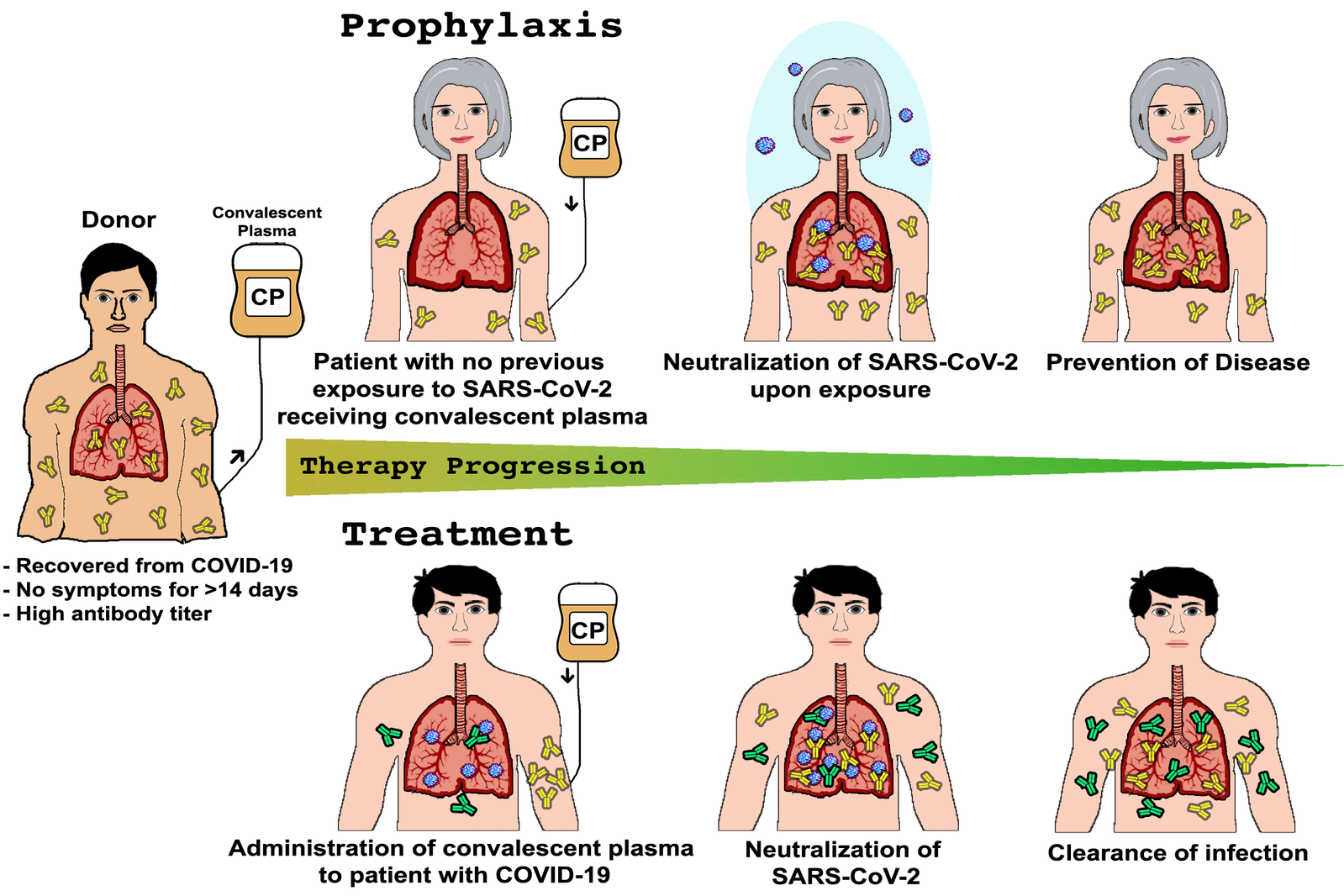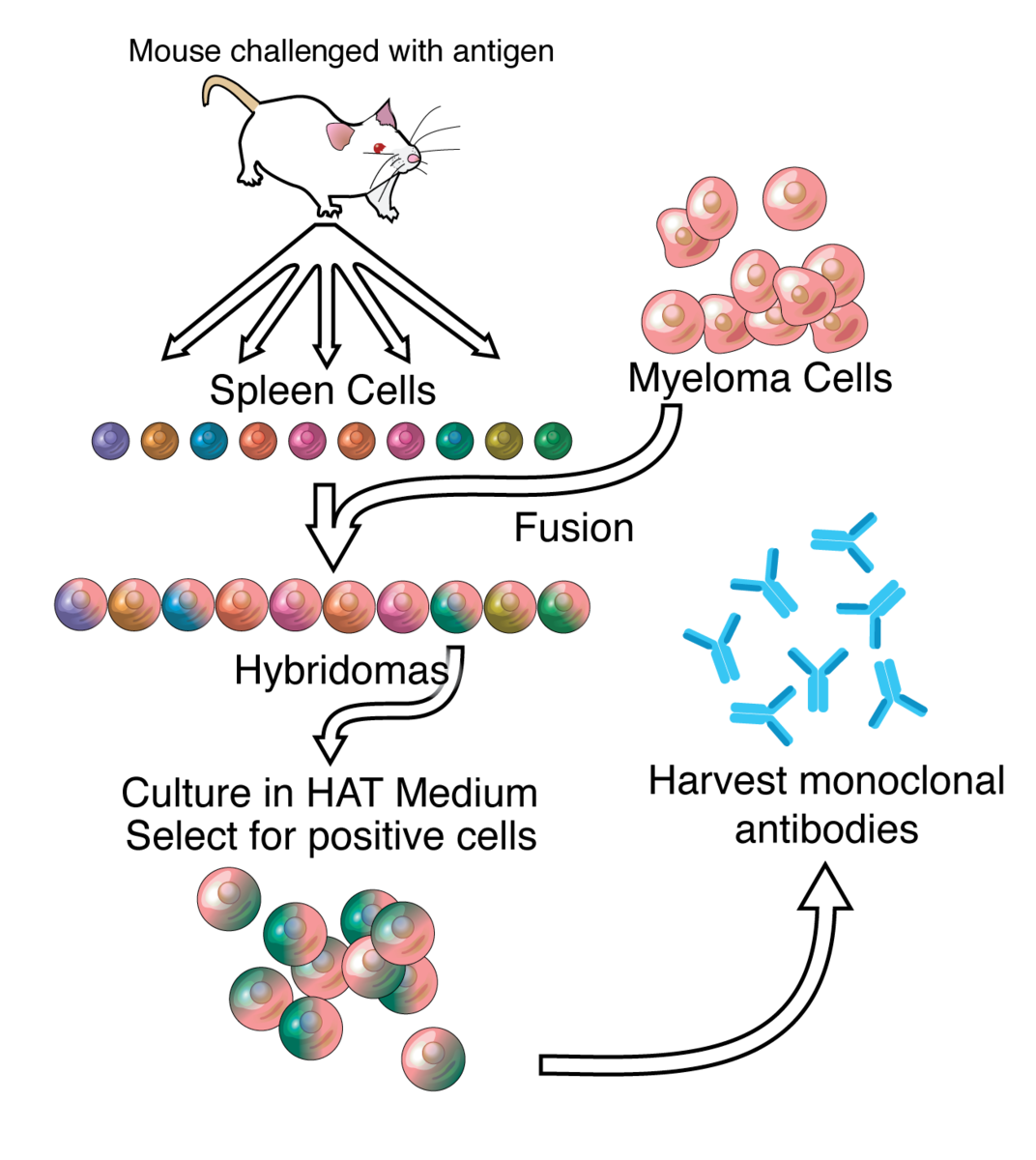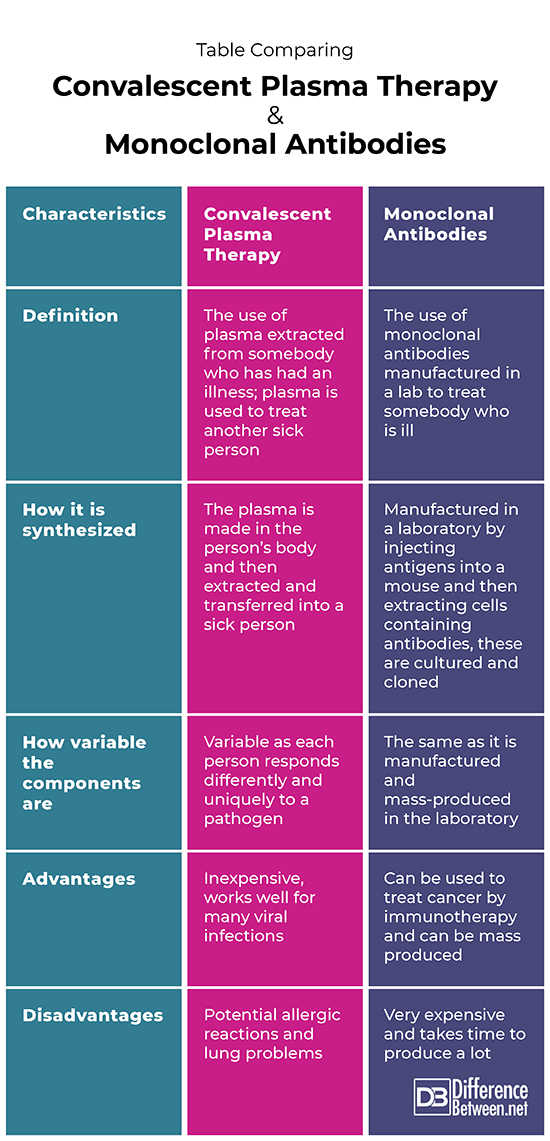Difference Between Convalescent Plasma Therapy and Monoclonal Antibodies
Convalescent plasma therapy is when blood plasma from one person is used to treat another person who is ill with the same infection. Monoclonal antibodies are made in the laboratory and used to treat specific infections.

What is Convalescent Plasma Therapy?
Definition:
Convalescent plasma therapy is a type of treatment in which the blood plasma of one person who has been ill with an infection and has recovered, is used to treat another individual whom has become ill with the same infection.
Formation:
Before the plasma can be extracted and used, the ill person needs to have recovered from the infection. When infected with a pathogen, the body mounts an immune response, which includes activating immune system cells such as T lymphocytes and B lymphocytes. The B lymphocytes make antibodies which attach to the antigens of the pathogen, marking it for destruction by other cells. Once a person has recovered from an infection, e.g. Covid-19, their blood plasma can be extracted and put through a process called plasmapheresis. In this process a sample of blood is removed and separated into its component parts. Only the fluid part, the plasma is kept and used for transfusion into a sick individual, the rest of the blood is returned to the donor.
Uses:
Convalescent therapy is primarily used in the treatment of illnesses that are caused by viruses and in which treatment options are limited.
Advantages:
The severity and chance of death seem to decrease, at least for Covid-19 patients treated with convalescent plasma, and especially for those who are treated in the earlier stages of the disease. Individuals may also be able to clear the body of the virus sooner with the use of convalescent plasma.
Disadvantages:
Although rare, there are some potential dangers associated with convalescent plasma therapy. For instance, in a few cases, such therapy has resulted in allergic responses and lung damage.
Examples:
Covid-19 plasma has been taken from patients who have been ill and recovered, and used to treat severely ill Covid-19 patients. Such therapy has also been used in the treatment of H1N1 influenza and for Ebola patients

What is Monoclonal antibodies?
Definition:
Monoclonal antibodies are proteins that are artificially synthesized in a laboratory to mimic natural antibodies that fight a particular pathogen.
Formation:
The antibodies are made using hybridoma technology. An antigen of concern is injected into a mouse, which triggers an immune response. The polyclonal antibodies produced in the mouse in response to the foreign antigen are then removed from the animal’s spleen, and combined with myeloma cells. The hybrid cells then are grown and later screened for the antibody of interest. The cells containing the antibody are mass produced so that large quantities of the monoclonal antibody can be synthesized.
Uses:
The idea behind monoclonal antibodies is to improve a person’s immune system response to an infection. They have been used for treating people with some types of cancer. They are also being investigated for use in treating people who have Covid-19. Scientists have identified potential monoclonal antibodies in people sick with the illness. The Covid antibodies of interest are those that target the spike protein of the virus which is the part allowing the virus to enter the host’s cells.
Advantages:
A monoclonal antibody can be developed and made to specifically target the antigen of a pathogen. Another big advantage is that since these antibodies are synthesized in a laboratory; it means that they can be mass produced. They can also be used to treat people with cancer, and potentially can be used against the Covid-19 viral infection, since they have been developed to treat other viral illnesses such as Ebola.
Disadvantages:
A big disadvantage of monoclonal antibodies is that it is expensive and time-consuming to produce. Like all molecular and cell culture techniques, cultures can become contaminated; if this happens then the cultures need to be discarded and antibody production is halted. This causes more loss of time and money.
Examples:
Researchers have found monoclonal antibodies to be helpful when treating Ebola patients if given early in the disease. The FDA has recently authorized the use of a monoclonal antibody therapy bamlanivimab for use in Covid-19 patients.
Difference between Convalescent plasma therapy and Monoclonal antibodies?
Definition
Convalescent plasma therapy is the use of plasma from one person to treat another who has the same illness. Monoclonal antibodies are made in a laboratory to treat an ill person.
How it is synthesized
Plasma is made in the person’s body and then extracted and put through plasmapheresis before transfer to a sick person. Monoclonal antibodies are made in a laboratory by first injecting antigens into a mouse and then extracting cells containing antibodies.
How variable the components are
Convalescent plasma varies because immune system responses vary. Monoclonal antibodies do not vary as they are synthesized and cloned in the laboratory.
Advantages
An advantage of convalescent plasma therapy is it works well for many viruses and it is inexpensive. An advantage of monoclonal antibodies is that it can be mass produced and can be used to treat cancer.
Disadvantages
Potential allergic reactions and lung problems are a concern with convalescent plasma therapy. Monoclonal antibodies are expensive to make and time-consuming.
Table comparing Convalescent plasma therapy and Monoclonal antibodies

Summary of Convalescent plasma therapy Vs. Monoclonal antibodies
- Both convalescent plasma therapy and monoclonal antibodies use antibodies in some form to help treat people who are ill.
- Convalescent plasma therapy has been of benefit to patients who have Covid-19 in reducing symptoms.
- Monoclonal antibodies are being investigated as a treatment option based on the identification of many in the Covid-19 virus, and at least one has been approved for use.
- Difference Between Rumination and Regurgitation - June 13, 2024
- Difference Between Pyelectasis and Hydronephrosis - June 4, 2024
- Difference Between Cellulitis and Erysipelas - June 1, 2024
Search DifferenceBetween.net :
Leave a Response
References :
[0]Marovich, Mary, John R. Mascola, and Myron S. Cohen. "Monoclonal antibodies for prevention and treatment of COVID-19." Jama 324.2 (2020): 131-132.
[1]Sewell, Herb F., et al. "Vaccines, convalescent plasma, and monoclonal antibodies for covid-19." BMJ 370 (2020).
[2]Xi, Yongzhi. "Convalescent plasma therapy for COVID-19: a tried-and-true old strategy?." Signal transduction and targeted therapy 5.1 (2020): 1-4.
[3]Image credit: https://commons.wikimedia.org/wiki/File:Ppat.1008735.g002.png
[4]Image credit: https://commons.wikimedia.org/wiki/File:Monoclonals.png
